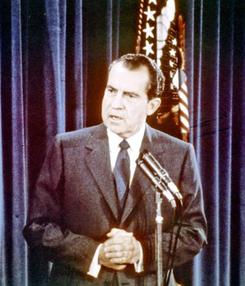|
J. William T. "Bill" Youngs, The Fair and the Falls: Spokane’s Expo ’74: Transforming an American Environment, Chapter Nineteen
|
"Expo '74" courtesy of the Flickr Commons
|
Chapter Nineteen: The Press of New Ideas
|
SummaryExpo brought together people of different nationalities, backgrounds, and opinions. During the fair, issues such as the rights of women and African Americans received special attention. But no issue was more central, or more controversial, than the fair's environmental theme.
|
Author reads from the Text
"A combination of a state fair and Disneyland"
"A local newsman who conducted interviews at the fair on opening day found opinion divided about the genuineness of the environmental message. One visitor complained that Expo was 'a combination of a state fair, a carnival, and Disneyland.' Another accused commercial exhibitors of distorting the truth about their own role as polluters.... Other visitors, however, were more positive in their assessment of Expo's sincerity. A local school teacher said that fair visitors 'definitely will leave with an increased awareness of environmental issues and problems.' Another remarked, 'The person who can't see the theme in the fair hasn't been out of the amusement park area.'"
"They missed it by a hundred percent"
"Despite the idealism evident at the environmental symposia, and the existence of scores of environmental displays at Expo, it was still possible to experience the world's fair without learning about ecology. Relatively few people went to the symposia. After the first meeting, organizers complained that only about 150 persons from Spokane had attended....Mel Alter, who managed the symposium series in the early stages, felt that the conferences would have done better with more support from the hosts: 'I thought that Spokane and the fair, at that time, missed an absolutely invaluable opportunity -- and they literally missed it by a hundred percent -- and that was the chance for Spokane to become environmentally known through this series. And out of that could have come, in my opinion, an on-going regional environmental center. It could have happened...'"
"Educate them while they are having fun"
"David Peterson argued that the fair came at a critical time in the evolution of the environmental movement. It was perfect for its time: 'We said that except for the seminar, it will not be an intellectual environmental fair. But go back and look at what newspapers were saying in 1971, '72, and '73. The whole level of sophistication was completely different. Nobody's automobile, even in California, was checked for smog. Most people had no idea what the word 'ecology' meant. Environmentalists were totally known as people that lived in the woods and chewed nuts and that kind of stuff. So our point was, if you introduce the subject to some people, isn't that better than no introduction at all? They are not going to read your manuals and your technical books. This is a chance to educate them while they are having fun.'"

